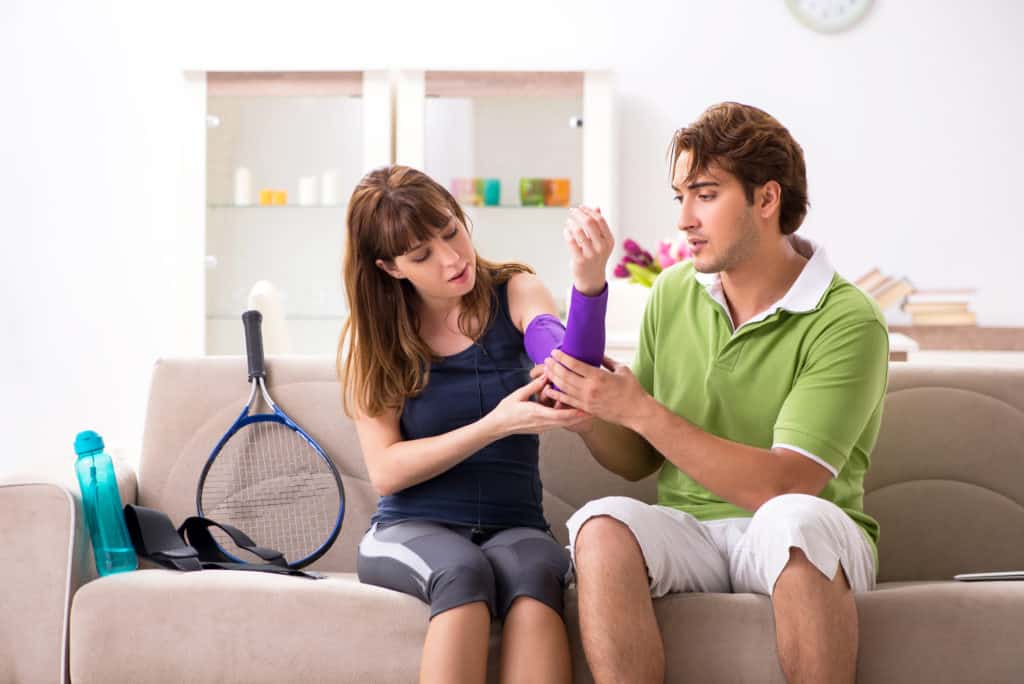
Have you heard the terms “golfer’s elbow” or “tennis elbow” and wondered what they mean and which one you have?
You might also wonder why you have one of these conditions when you don’t play either sport, right?
Tennis and golfer’s elbow are conditions with similar signs and symptoms. As their names suggest, we mainly find them in athletes (but not always).
For example, pain caused by using the forearm muscles when extending or clenching fingers could result from either condition.
More Blogs From RPM Physical Therapy:
What Is Causing My Upper Back Pain?
What Causes Golfer’s Elbow and Tennis Elbow?

Any trauma or overuse (from golf, tennis, and other sports) is generally the cause of golfer’s or tennis elbow.
Especially if you don’t perform adequate warmup exercises before starting to play, but if you’ve never hit a ball (not in the last decade, anyway), your job could also cause both conditions.
It’s not just professional athletes that suffer from these conditions either. Part-time and amateur sports people are also at risk.
Both conditions are often the result of repetitive motions of the wrist and the arm.
For example, even people who type a lot or use a computer mouse can develop golfer’s or tennis elbow.
The important thing to remember, regardless of the cause and the condition you think you have, is that you should not ignore either of these conditions because they can lead to long-term discomfort and chronic pain if you don’t seek treatment.
But what’s the difference between the two conditions?
The Difference Between Tennis Elbow and Golfer’s Elbow
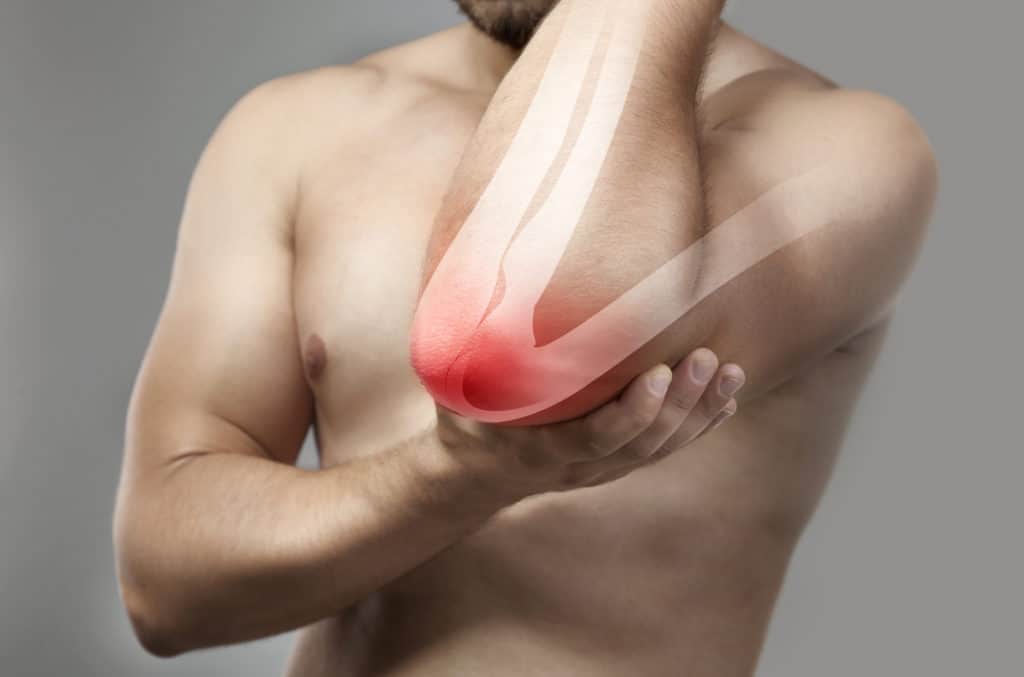
The main difference between the two conditions is where you feel the pain. Tennis elbow, as the name suggests, is the inflammation of the tendons on the outside of the elbow.
We also refer to it as “lateral epicondylitis.” A golfer’s elbow is the inflammation of tendons on the inside of the elbow.
Both conditions cause intense discomfort when you use your hands to lift, twist or hold objects. The causes, effects, and treatments are similar as well.
However, the main difference is that they impact different parts of the elbow and surrounding arm.
They occur when either of the forearm’s tendons gets injured due to trauma or excess use. These tendons link the forearm muscles to the elbow and are used to lift, hold, or twist.
When the tendon is weak, it increases stress and leads to pain. This weakness can cause tennis or golfer’s elbow.
Tennis elbow is medically called “lateral epicondylitis,” or inflammation of the outer elbow. Golfer’s elbow is known as “medial epicondylitis”, or inflammation of the inner elbow.
How To Tell The Difference Between Tennis or Golfer’s Elbow
You need a professional physical therapist to distinguish between these two conditions. We may even diagnose you with a completely different condition when we examine you.
But in simple terms, both conditions affect different parts of the elbow, which makes it slightly easier to tell whether it’s golfers’ or tennis elbow.
When you’re feeling pain, it can be hard to decipher where it comes from.
However, if you feel pain when closing your fingers to grip, it’s more likely to be golfer’s elbow.
Likewise, if you feel pain when you release your fingers, it’s most likely tennis elbow (or something different altogether).
Tennis Elbow

Tennis elbow or lateral epicondylitis affects the “extensor carpi radialis brevis muscle,” which is used when you extend your wrist.
Therefore, if you suffer from this condition, you will find it difficult to hold, lift or twist objects.
What Are The Symptoms Of Tennis Elbow?
When you experience tennis elbow, there is tenderness and pain on the outer part of the elbow, with the pain radiating from the forearm towards the hand, thus weakening your grip.
Some of the activities that worsen the condition are:
- Clenching the fist
- Extending fingers
- The outer elbow is sensitive to touch
- Having to lift any object
- Twist any object
- Rotating the wrist
- Make a waving motion
Treating Tennis Elbow
The best treatment for tennis elbow is professional physical therapy combined with resting the forearm from sport and the repetitive movements that caused it.
The following physical therapy exercises are helpful for tennis elbow:
Wrist Extension
Place the palm face downwards on a flat surface, followed by extending the wrist and gradually lifting it off the table. Hold any object to strengthen the muscles.
Wrist Flexion
Like the wrist extension with one difference, the palm faces upwards.
Grip Strengthening
To develop a better grip, practice squeezing a stress ball and holding for a couple of seconds.
Golfer’s Elbow
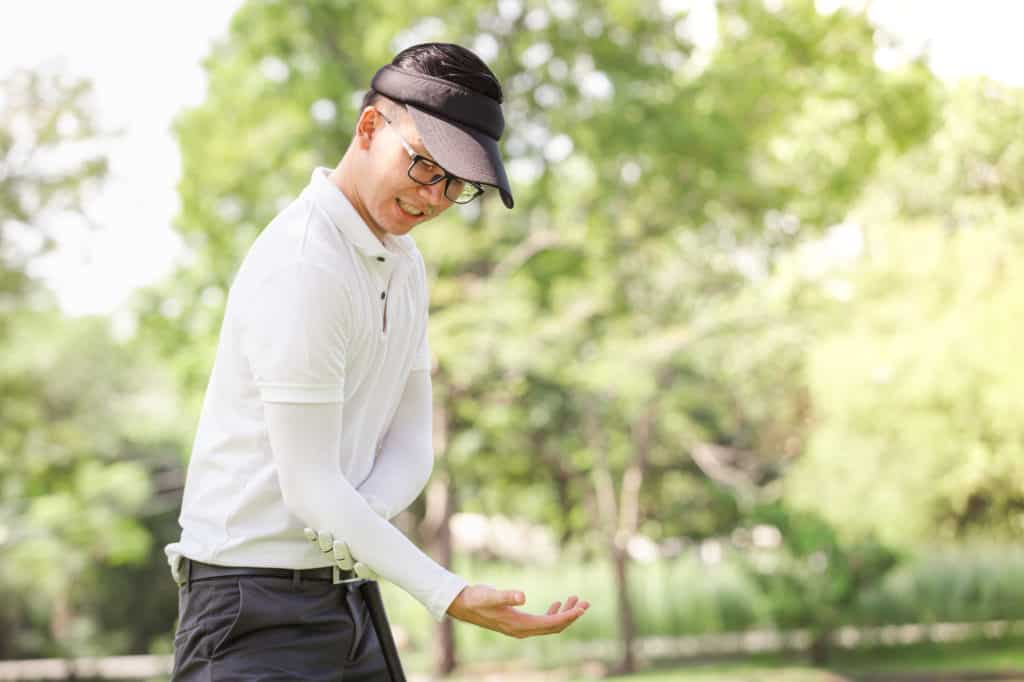
As we mentioned, the causes of both conditions are almost the same. As with tennis elbow, golfer’s elbow is mainly caused by trauma or overuse.
Any sport that involves throwing or gripping can increase the risk of golfer’s elbow, and so can lifting or twisting.
Repetitive activities using the fingers and wrist – like typing – can also cause a golfer’s elbow.
What Are The Symptoms Of Golfer’s Elbow?
If you’re afflicted with golfer’s elbow, you will experience pain in the inner side of the elbow, with movements like clenching the fist becoming painful.
In addition, there may be a tingling or a numb sensation with weakness in your wrist and hand.
Treating Golfer’s Elbow
The treatments for golfer’s elbow are like those for tennis elbow, with minor variations.
Again, physical therapy is the best treatment, with exercises to strengthen the wrist and sufficient rest. Specifically, exercises for extensions and flexions with stretches can help to relieve the symptoms.
Some of the exercises we use may be:
Isometric Wrist Movements
For this, both extension and flexion movements are beneficial. This involves raising and lowering the wrist while keeping your palm upwards or downwards and using the other arm as resistance.
Resisted Wrist Flexion
In this exercise, you hold a dumbbell with the palm facing upward.
Resisted Wrist Extension
Place your hand at the table’s edge, palm downwards, and hold a light dumbbell while raising and lowering your hand.
Golfer’s Elbow stretch
Hold your arm straight with your palm upwards, and your wrist and fingers pull downwards in your body’s direction.
Treatments For Tennis Elbow & Golfer’s Elbow
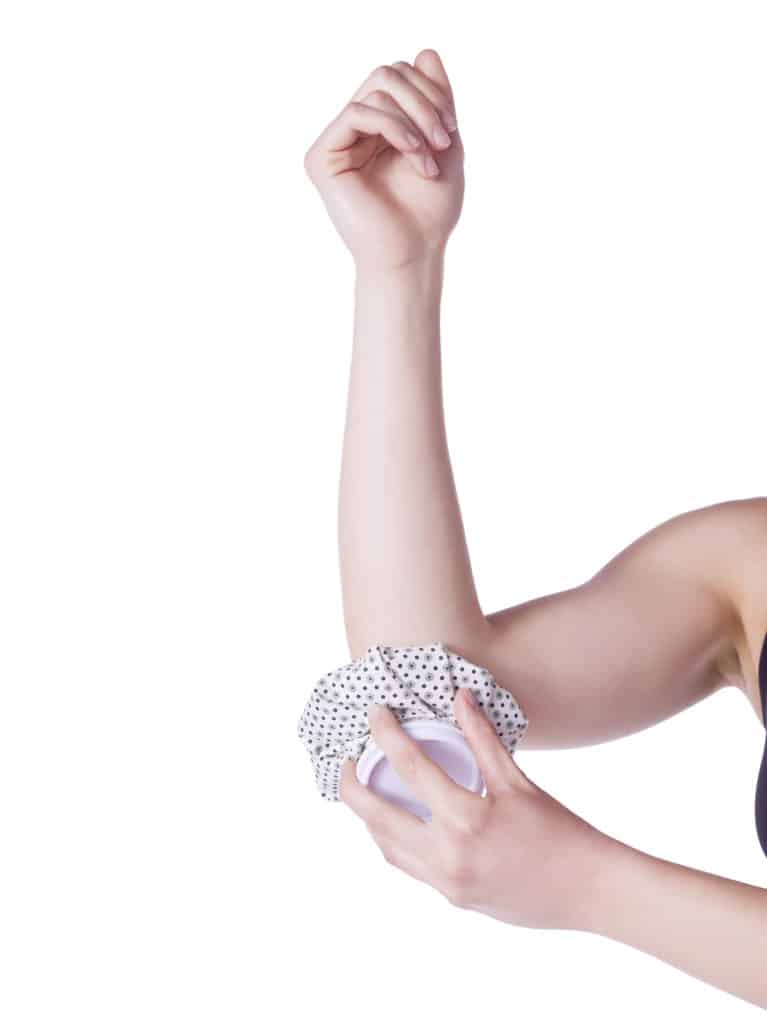
As mentioned above treatments for both conditions are fairly similar.
Incorporate these treatments below to enhance your recovery:
Athletic Taping
We may use athletic taping on the affected tendon to relieve the strain.
Splint/Brace
Wearing a splint/brace on the elbow can help to relieve strain.
This is essential if you want to continue the activity that led to the condition. The brace/splint is used in the same position for both conditions.
Cold Or Hot Pack
For pain and inflammation, either a hot or cold compression pack may help to soothe the area and reduce pain.
Anti-Inflammatory Medication
OTC medication for inflammation may help to relieve inflammation and pain – until you can see a physical therapist.
Plasma Therapy
Platelet-rich plasma therapy is sometimes recommended to improve healing in both conditions.
Changing Form
With advice from a physical therapist, you may need to change the motion or grip you use when you play sports to put less strain on the tendons. This may include changing equipment.
Warmups
A proper warmup routine to limber muscles and tendons is always recommended before any sporting activity.
Hydration
It is essential to stay hydrated as dehydration can lead to injury and pain.
Rest And Recuperation
Both tennis elbow and golfers elbow require sufficient rest for recovery. If not given enough time to heal, the injury may become chronic.
Time To Act
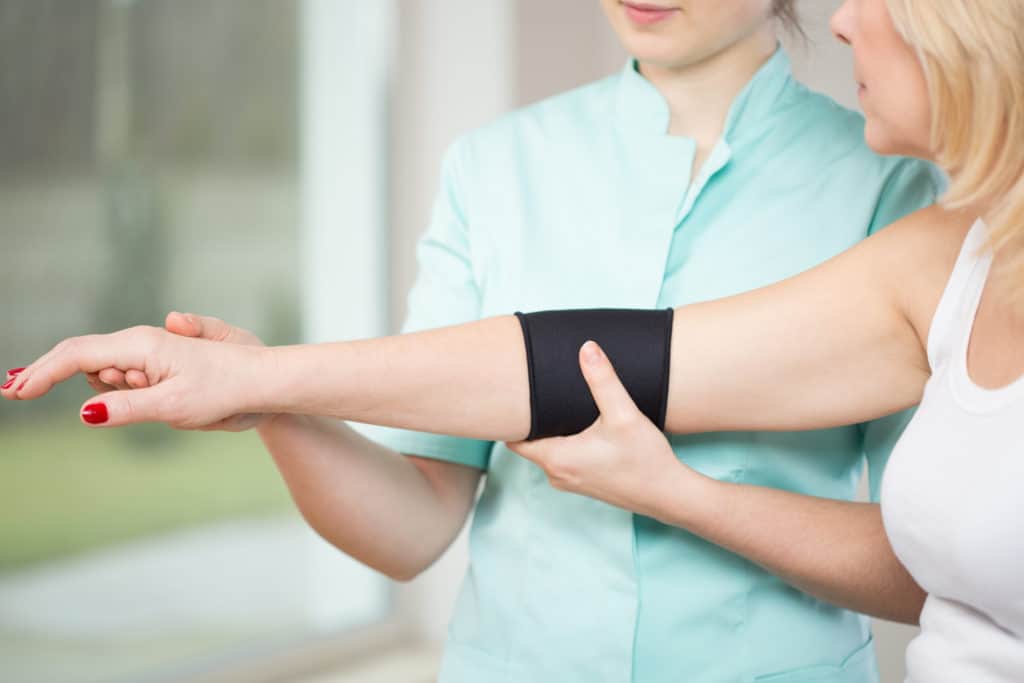
If you’re wondering (which makes it even more challenging to diagnose yourself on the internet), Yes, both conditions can exist side by side.
Repetitive activities that heavily use the medial and lateral parts of the forearm can lead to both conditions occurring simultaneously.
If you have both conditions, you’ll likely find opening and closing your fingers painful and feel pain when you perform any movement involving the tendons.
You’re most likely to have both conditions if you’re a golfer, tennis player, rock climber, or construction worker.
If you’re suffering from either tennis or golfer’s elbow, there are likely other related areas of your body that are in pain.
This pain is because as the muscles in your forearm try to compensate for the injury, they can end up causing other issues. For example, you may also suffer from neck pain or headaches.
You may also experience pain in your wrist, fingers, shoulder, and chest or breastplate area. For example, as the muscles in your forearm tense up, they can start to pressure nerves that run from your neck down to your fingers.
This can cause referred pain, which is felt in one area of the body but is caused by an issue elsewhere.
Physical Therapy is one of the most effective ways to deal with and manage your pain.
We can help you find relief from conditions and other physical pain with a treatment plan designed specifically for your needs.
This plan may include exercises, stretches, and other activities that help to improve your range of motion and strength.
Don’t wait until the pain from these conditions gets unbearable.
Dr. Jonathan Ruzicka is a Manual Therapist whose experience as a private therapist for professional athletes drove him to further his education attaining unparalleled skills in tissue mobility work, performance based rehab, injury prevention, myofacial release and joint mobilization to optimize human performance.
- Physical Therapy for Oak Ridge North Residents Near The Woodlands - November 7, 2025
- 5 Lower Back Pain Stretches to Ease Your Discomfort - August 23, 2024
- How to Avoid Foot and Ankle Pain and Stay Active! - July 26, 2024


